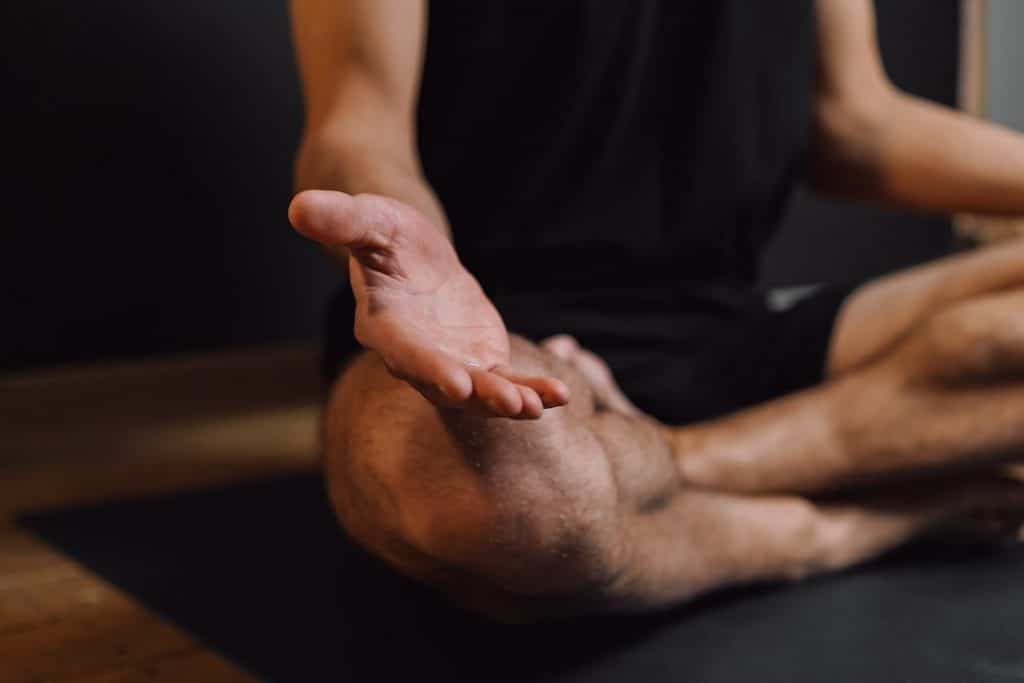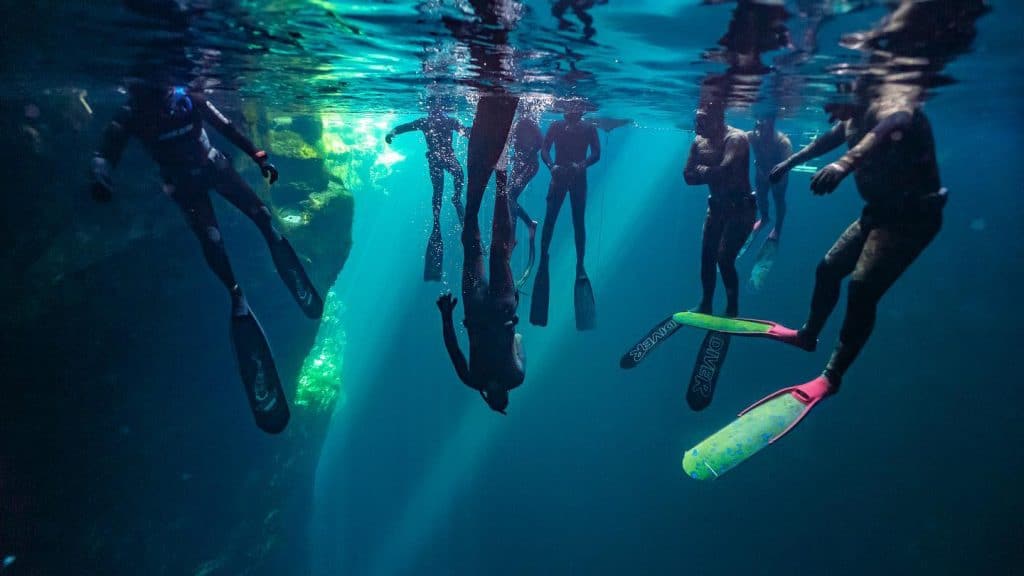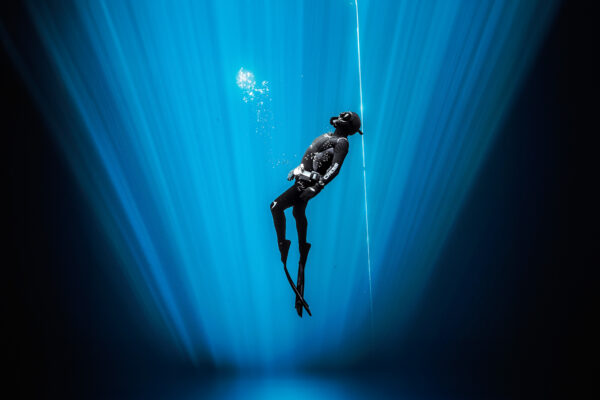Our breath is a simple yet incredibly powerful tool we carry with us every single moment of our lives.
The breath – a constant ebb and flow of life that has been with us from the time we were born. Most of the time, many of us aren’t even aware of it. However, in the water it’s quickly found. The moment of submersion brings a heightened state of awareness. Freediving will completely shift the relationship you have with your breath and your body. Freediving is the inevitable deepening of the mind and body connection… And in some ways it’s what makes freediving so addictive.
This article will cover:
- The basic origins of breathwork
- How freedivers can use breathwork on land to improve dives
- Breath awareness vs. conscious breathing

The breath: then and now
For centuries, many cultures have explored practices with breathing. Buddhist monks have used the breath in meditation as the anchor for conscious awareness in the present moment. Thankfully, over the last decade or so, these practices have been picked up in the mainstream, and breathwork (or pranayama) as a practice has been consistently gaining popularity over the last few years. I say thankfully because as a collective, it many of us have completely forgotten about breathing throughout our daily lives (this is a whole other kettle of fish really, a conversation I’d love to have another time…).
Mind, body and breath connection
The breath is one of the most simple tools one can utilise not only in freediving, but throughout so many other aspects of life (perhaps this increased awareness to the breath is why freediving is so good for you). For example, when you become aware of your breath through any other physical exercises, you’ll end up noticing a dramatic shift in the quality of your workouts. This can look like breathing through a tough exercise at the gym instead of holding your breath. The breath is your guide not only through moments of physical stress, but mental and emotional stress as well. You can come into a much more relaxed state of mind and slow down your heart rate through calm, slow and steady breathing. Interestingly, even times of pleasure can be enjoyed so much more consciously through breathing. Through any of these experiences, there is always so much to learn about yourself when you can stay present through them. And with presence, the breath is always right there.
The 2 types of breath practices:
Breath awareness
Breath awareness is arguably the most calming, yet most challenging breath practices one can do. Why? Because breath awareness is exactly what it sounds like – focusing every corner of your mind on the breath and nothing else. Manipulating the breath in any way is not needed nor encouraged, this practice is simple: allow the breath to move in and out of the body. It’s a practice of continuously letting go of the constant random thoughts popping into your brain (and so many other distractions) as you focus on the inhale and the exhale. Many will find their focus after only 2-4 breaths starts to waver – thinking about the groceries or that weird conversation you had yesterday. I like to think of breath awareness as brain training. A connection with body and mind starting with the mind.
How this style of practice relates to freediving: As a freediver, you know that feeling about 1-2 seconds after you dive down and experience that inner silence? The purest peace. The present moment. What if I told you that pracing on land could make this feeling even more beautiful? And besides that – how nice would that be to experience that present moment often? Truly, every person on this planet could benefit from practicing conscious breath awareness in our everyday lives. The world would be a better place because we would be staying present within each moment.
Conscious breathing
Conversely, I like to think of conscious breathing as a connection with body and mind starting with the body. Conscious breathing is when you begin to manipulate your breath, and is a lot of what modern day breathwork is known to be. Breath manipulation can look like a wide range of different modalities, basically including:
- Breath counting – inhales, exhales and breath holds
- Powerful vs. gentle breaths
- Slow and calm vs. fast and excited breaths
- Shallow vs. deep breaths
- Visualising breathing into different parts of your body
How this style of practice relates to freediving: Breath holding is of the most obvious practices for increasing your performance underwater. I mean, one of the first questions you’re asked as a freediver is, “How long can you hold your breath?”. For safety reasons, in freediving, it is paramount to learn when your body is signaling certain cues about your O2 and CO2 levels. Through a steady pranayama practice, you can become more accustomed to the feeling of CO2 buildup in the body and safely knowing your body’s limits. So, some conscious breathing practices that may help your dry practice can be the following:
- Coherent breathing
- Try it – breathe in for 7 counts, breathing out for 7 counts. When you feel comfortable, gradually increase the counts over time.
- Box breathing
- Try it – breathe in for 4 counts, hold for 4, breath out for 4, hold for 4. Imagine you’re tracing the edges of a square box.
- Belly breathing / diaphragmatic breathing
- Try it – when you breathe in, draw your breath down into your lungs so your belly expands like a balloon is inside of it. This is your diaphragm muscle (main breathing muscle) being used to breathe.
- Many people don’t realize that most of the time they are breathing shallow, sharp breaths into the chest. This is a stress response and can lead to many different negative health issues when prolonged over a period of time. If you are having trouble breathing into your belly, fake it til you make it. It will get easier and your natural state of rest will come to you.
- Three-part breathing
- Try it – ⅓ inhale into the chest, ⅓ inhale into the ribs, ⅓ inhale into the belly. Exhale in 3 parts as well, or all at once.
//
Practice breathwork, go deeper
While breath awareness and conscious breathing are both transformational, conscious breathing is typically a more energetic way of provoking change. Freedivers with a balanced mix of these two practices can positively influence your performance below the surface. Through either one of these incredible practices, you can discover a deeper level of trust with the mind/body connection.



